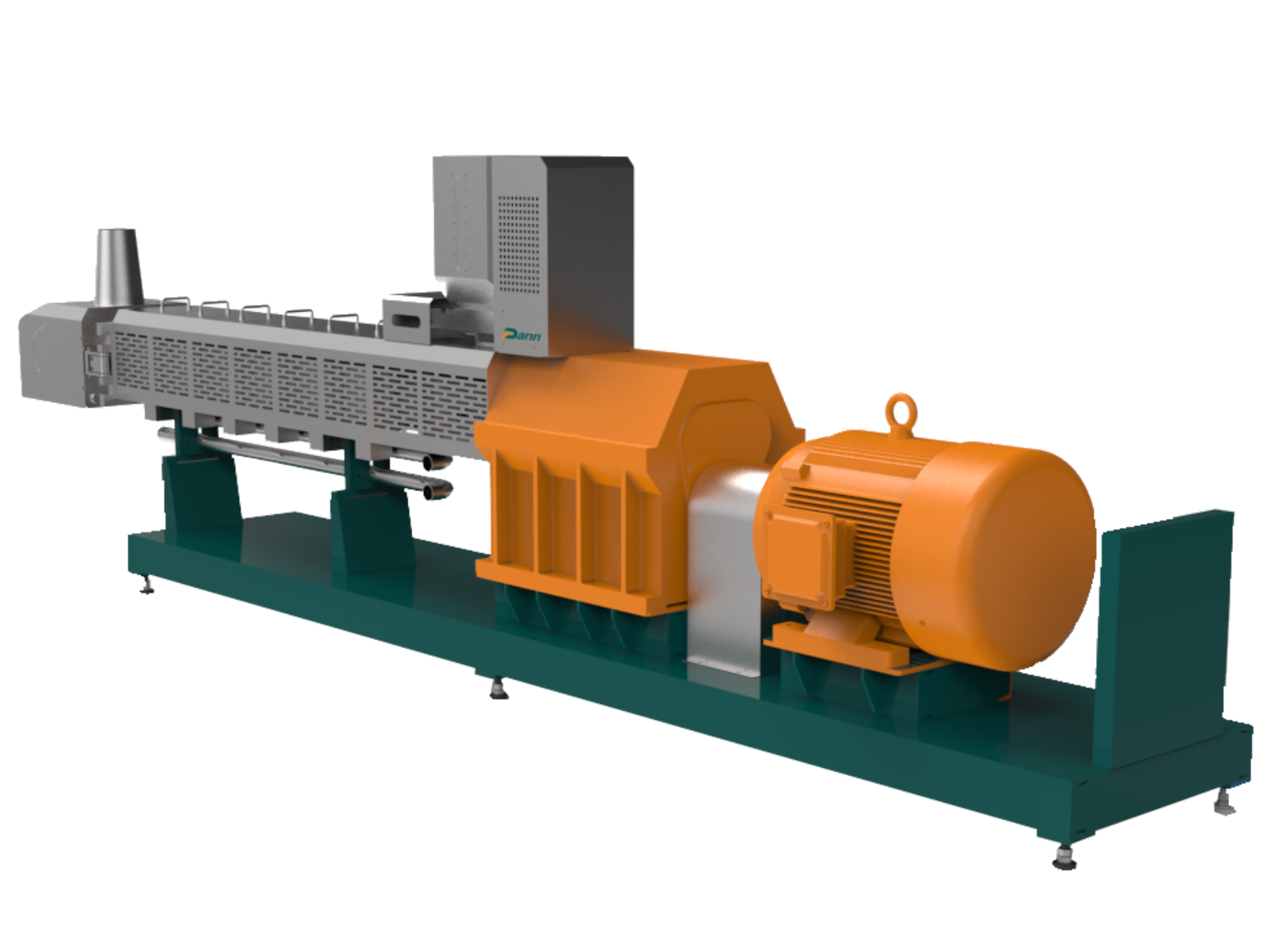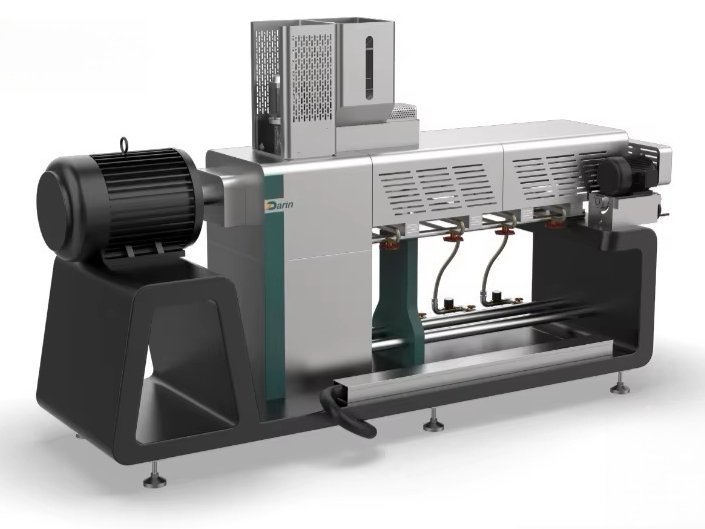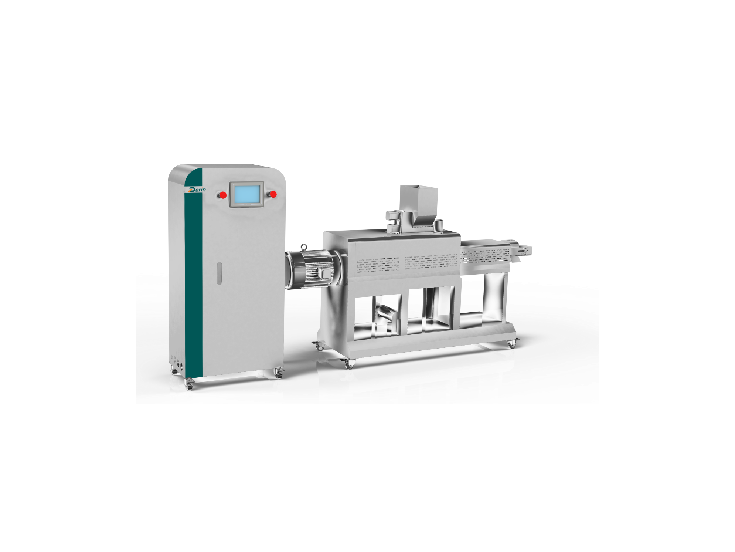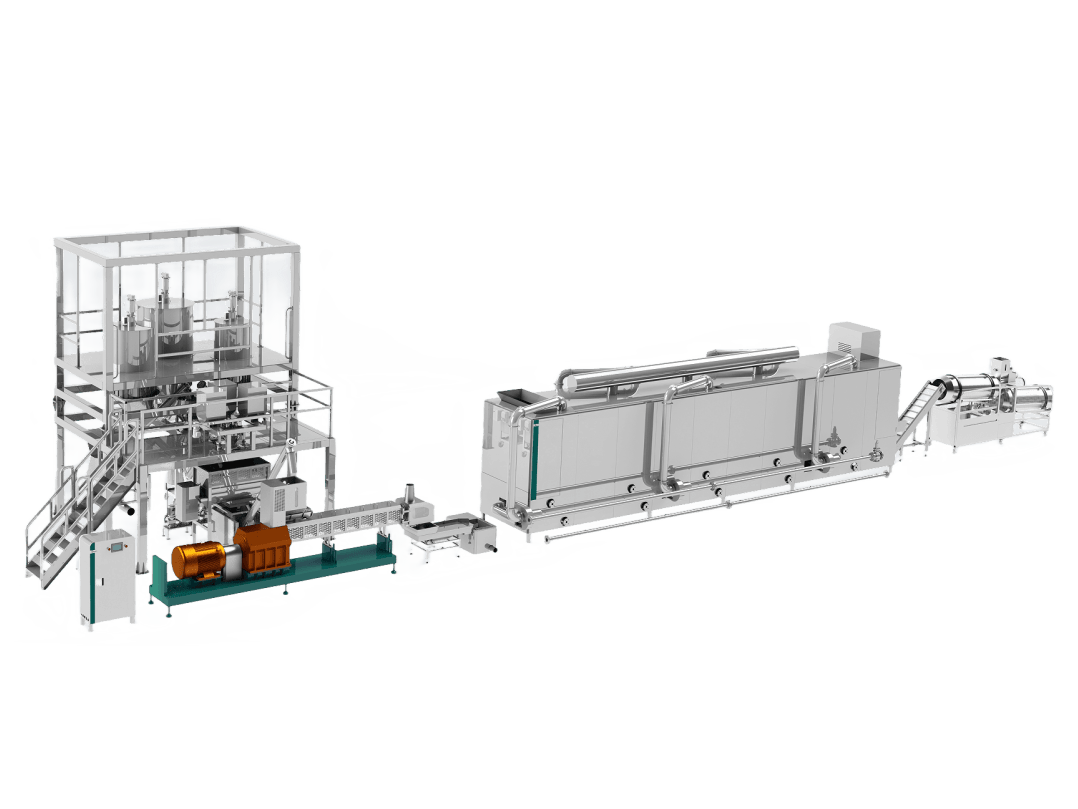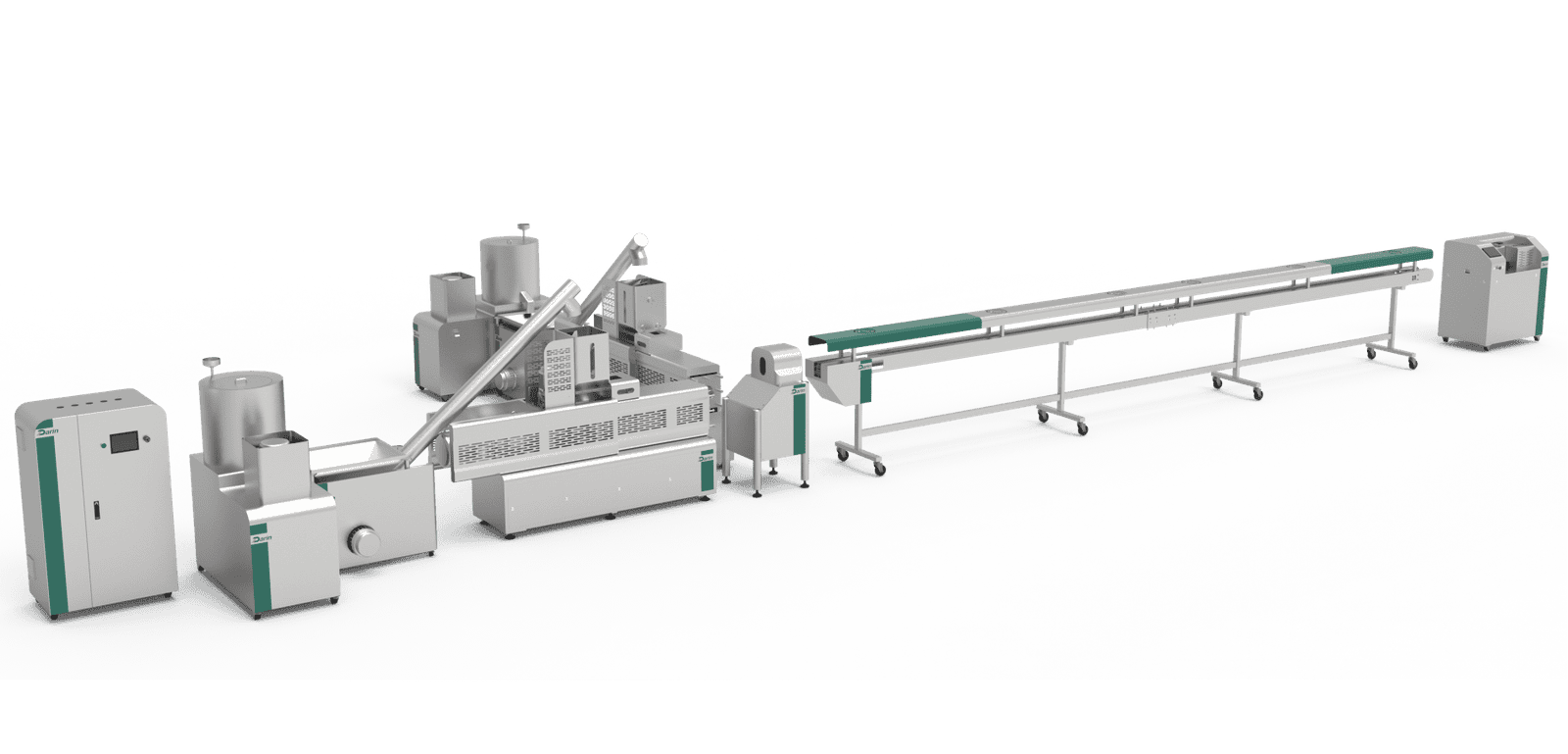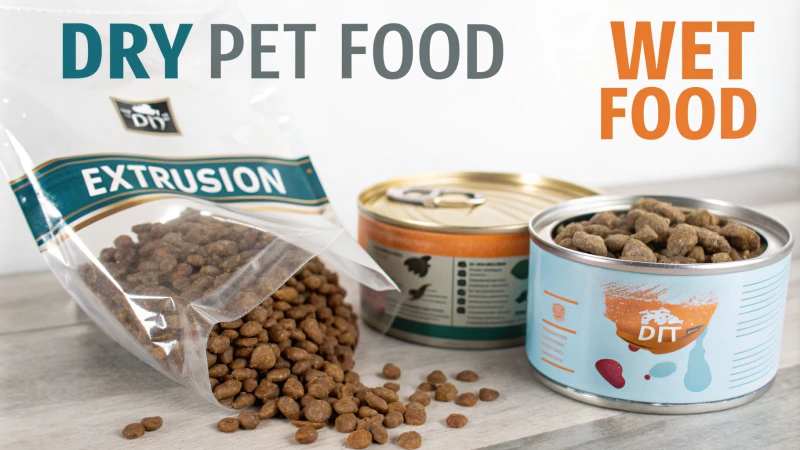
Canned pet food is one of the fastest-growing segments in the pet nutrition industry — but few pet food manufacturers or investors truly understand how industrial canned pet food lines work. When production is poorly designed, the result can be inconsistent texture, microbial spoilage, or expensive downtime. The consequences? Lower shelf stability, poor product appeal, and even brand reputation loss. The good news is that a properly engineered canned pet food production line — equipped with precise cooking, filling, and sterilization systems — ensures consistent quality, food safety, and profitability.
Canned pet food production lines use automated processes to prepare, fill, seal, and sterilize pet food under high-temperature and high-pressure conditions, ensuring shelf-stable products with controlled texture, moisture, and nutrition. The process includes raw material preparation, blending, cooking, filling, can sealing, retorting (sterilization), cooling, labeling, and packaging — all performed by stainless-steel equipment designed for hygienic, continuous operation.
If you’re planning to build or expand a pet food factory, understanding each stage of the canned pet food process — from raw material control to packaging — will help you make smarter machinery and layout decisions.
Canned pet food requires refrigeration for preservation.False
Canned pet food is sterilized under high temperature and pressure (retort process), making it shelf-stable without refrigeration until opened.
Step-by-Step Process of Canned Pet Food Production
Step 1: Raw Material Preparation and Grinding
The process starts with preparing meat, fish, poultry, or plant-based ingredients. These raw materials are inspected, deboned, and ground into fine particle sizes (3–8 mm) to ensure smooth mixing. Modern lines use stainless steel grinders and mincers with variable-speed drives.
Key Equipment:
- Meat grinder (stainless steel, variable cutter speed)
- Raw material hopper and conveyor
- Bone separator (for poultry or fish)
| Ingredient Type | Preparation Method | Target Particle Size | Notes |
|---|---|---|---|
| Fresh meat | Chilled grinding | 3–5 mm | Prevent oxidation |
| Offal | Scalding and trimming | 4–6 mm | High protein |
| Vegetables | Blanching and dicing | 5–8 mm | Add fiber |
| Cereals | Precooking | <1 mm | For thickening |
Step 2: Mixing and Formulation
In this step, the ground ingredients are weighed and mixed according to the recipe — including proteins, fats, vitamins, minerals, and water or broth. Mixing must be uniform to maintain nutritional accuracy and product texture.
Key Equipment:
- Double-shaft paddle mixer or vacuum mixer
- Automatic recipe dosing system
- Emulsifier or colloid mill
Technical Note:
Mixing temperature should be kept below 40°C to prevent premature protein denaturation.
Step 3: Cooking or Preheating
The mixture is cooked to improve digestibility and palatability. Steam jacketed cookers or continuous thermal cookers are commonly used.
| Cooking Parameter | Typical Range | Purpose |
|---|---|---|
| Temperature | 90–120°C | Protein coagulation |
| Time | 5–15 min | Kill bacteria, soften texture |
| Steam pressure | 0.1–0.2 MPa | Energy-efficient heating |
Advanced lines integrate inline cooking-extrusion or preconditioners to enhance control of starch gelatinization and flavor development.
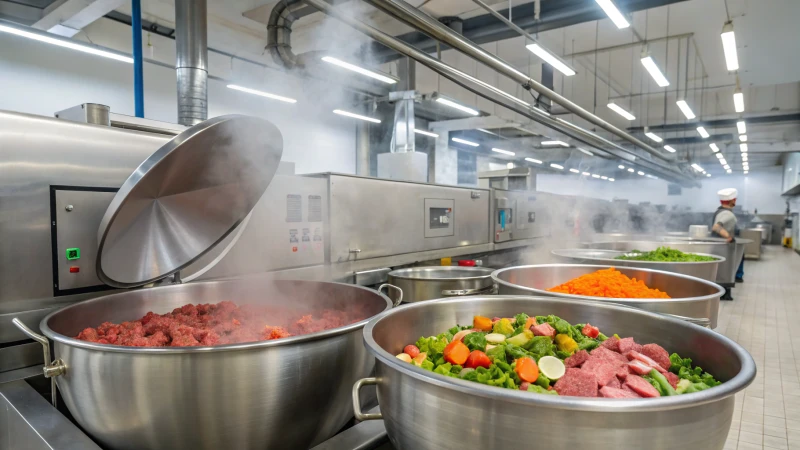
Step 4: Filling and Portioning
After cooking, the product is automatically filled into metal cans, aluminum trays, or retort pouches. Filling accuracy is essential for uniform weight and sealing performance.
Key Equipment:
- Automatic filling machine (piston or vacuum type)
- Conveyor line to seamer
- Can cleaning and preheating units
Filling Accuracy: ±1.5 g per 400 g can
Canned pet food is filled manually in small factories.False
Most modern canned pet food factories use automatic filling machines to ensure hygiene, consistency, and speed.
Step 5: Can Sealing (Seaming)
Filled cans are automatically transferred to sealing machines. High-quality double seaming ensures airtight closure, preventing microbial contamination.
| Can Size | Typical Sealing Speed | Seaming Type |
|---|---|---|
| 400 g | 100–150 cans/min | Double seam |
| 850 g | 60–80 cans/min | Double seam |
Quality Control Check: Seam thickness, overlap rate, and vacuum level.
Step 6: Sterilization (Retorting Process)
Sterilization, or retorting, is the critical step that ensures long shelf life. Cans are heated in a retort chamber under high temperature and pressure (usually 121°C, 0.2 MPa) for a defined time to destroy all harmful microorganisms.
Key Equipment:
- Horizontal or vertical retort sterilizer
- Steam-air mixture or water-spray system
- PLC-based temperature/time control
Typical Retort Cycle:
- Heating phase: 20–25 min
- Holding phase: 30–45 min
- Cooling phase: 20 min
| Sterilization Parameter | Value | Result |
|---|---|---|
| Temperature | 121°C | Complete microbial kill |
| Pressure | 0.2 MPa | Prevent can deformation |
| F0 Value | ≥6 | Ensures commercial sterility |
Step 7: Cooling and Drying
After sterilization, cans are cooled gradually with clean water to 35–40°C to prevent overcooking. Surface drying systems prevent rust and labeling issues.
Key Equipment:
- Cooling conveyor
- Air knife dryer
- Water recovery and filtration unit
Step 8: Labeling, Coding, and Packaging
Cans are labeled, coded (with batch/date information), and packed into cartons or shrink-wrapped for logistics.
| Packaging Type | Material | Automation Level |
|---|---|---|
| Shrink wrap | PE film | High |
| Carton | Corrugated paper | Medium |
| Tray + film | PET | High |
Additional Quality Checks:
- Barcode scanning
- Label alignment inspection
- Weight verification
Technical Layout Example
Below is a simplified layout of a 10,000 cans/hour production line:
| Section | Equipment | Capacity (cans/hour) | Remarks |
|---|---|---|---|
| Grinding & Mixing | Grinder + Mixer | 12,000 | Buffer before filling |
| Cooking | Steam cooker | 10,000 | Continuous |
| Filling | Piston filler | 10,000 | ±1.5 g accuracy |
| Sealing | Double seamer | 10,000 | Vacuum type |
| Retort | 2×Vertical retorts | 10,000 | 121°C cycle |
| Cooling & Drying | Conveyor + Air knife | 10,000 | Closed loop |
| Labeling & Packing | Labeler + Carton packer | 10,000 | End-of-line automation |
Quality & Safety Control in Canned Pet Food Production
- Metal detection and X-ray inspection — ensures no foreign materials remain.
- HACCP & ISO22000 compliance — full traceability from raw material to finished can.
- Automatic CIP (Clean-In-Place) system — maintains hygiene without dismantling equipment.
- Data logging — digital monitoring of F0 value, temperature, and pressure in sterilization.
- Microbiological testing — confirm sterility after retorting (no growth at 37°C for 7 days).
Retort sterilization can damage nutrients in canned pet food.False
High-temperature sterilization slightly reduces heat-sensitive vitamins, but formulation compensates for nutrient loss to ensure nutritional balance.
Advantages of a Fully Automatic Canned Pet Food Line
| Feature | Benefit |
|---|---|
| PLC + HMI Control | Intelligent process control |
| Stainless Steel 304/316 | Hygienic and corrosion-resistant |
| Modular Design | Easy to scale production |
| Energy Recovery Systems | Lower steam and water consumption |
| Servo Filling & Seaming | Precision with reduced waste |
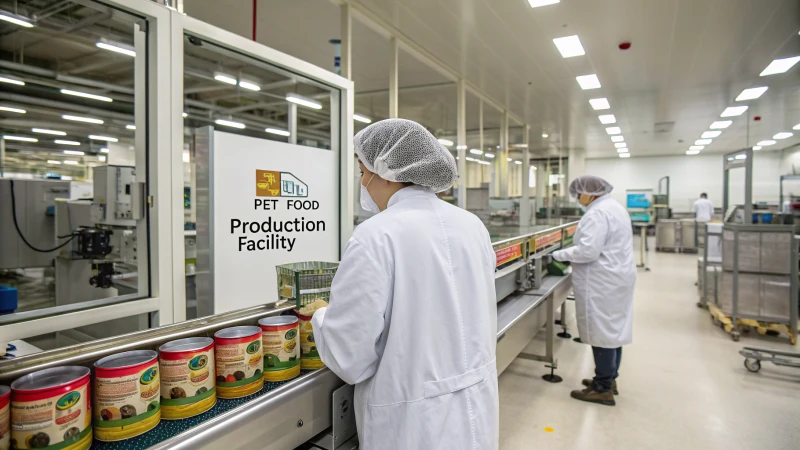
Case Study: Darin 6,000 Cans/hour Pet Food Line
Darin Machinery’s turnkey canned pet food line has been deployed in over 30 countries, including Brazil, Russia, and South Korea.
- Capacity: 6,000 cans/hour
- Automation: PLC-controlled filling, sealing, and retorting
- Retort Type: Water spray rotary retort, F0 control
- Applications: Wet dog food, wet cat food, meat pâté, jelly-type food
Results:
- Shelf life extended to 24 months
- Production cost reduced by 18%
- Batch-to-batch texture variation under 2%
Economic Considerations
| Item | Entry-Level Line | High-End Line |
|---|---|---|
| Capacity | 1,000 cans/hour | 10,000 cans/hour |
| Power Consumption | 45–70 kW | 120–180 kW |
| Steam Requirement | 300 kg/h | 1,200 kg/h |
| Space Requirement | 300 m² | 1,200 m² |
| Labor | 4–6 workers | 2–3 operators |
| ROI Period | 2 years | 1.5 years |
Environmental and Sustainability Practices
Modern canned pet food factories integrate wastewater recycling, heat recovery from retorts, and biogas from meat waste to meet sustainability goals.
Typical CO₂ reduction: up to 25% with integrated energy recovery systems.
Final Thoughts
The canned pet food market continues to expand rapidly, driven by consumer demand for convenient, nutritious, and long-shelf-life pet diets. For manufacturers, success depends not just on good recipes, but on investing in high-efficiency, hygienic, and automated production lines that guarantee consistent quality.
Ready to Build Your Own Canned Pet Food Production Line?
Darin Machinery provides complete turnkey solutions for wet and canned pet food processing — from formulation and plant design to installation and training. Contact us today to discuss your production goals and get a customized proposal.
📩 Email: darin4@darin.cn
🌐 Website: www.petreatsmachine.com
📞 WhatsApp: +86 156 5000 7983
Let’s design your next-generation pet food factory — with Darin Machinery.


